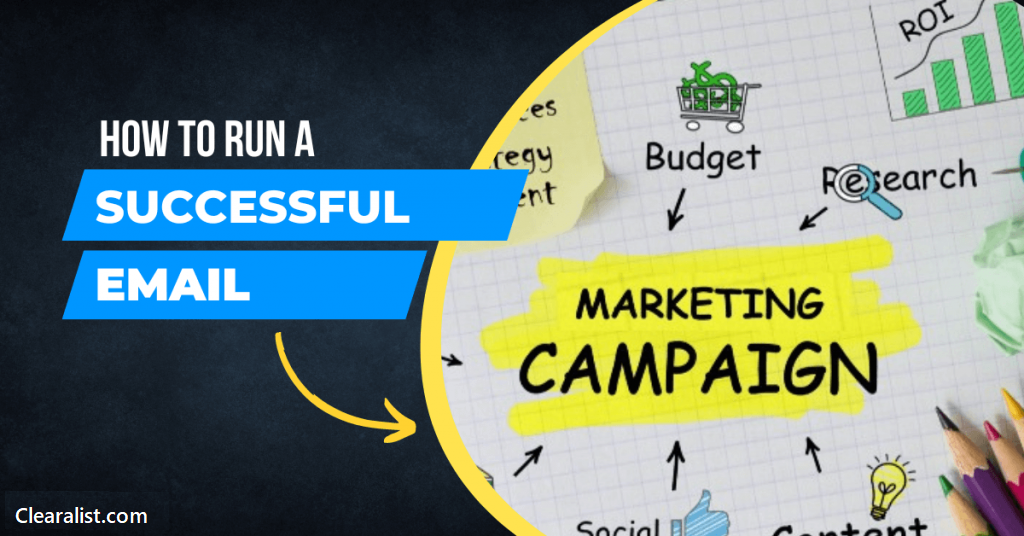What is an Email?
Ray Tomlinson is called the father of the email system. An electronic communication invented in the 1970s to communicate faster during the era of letters and telegrams, which modified the way people communicate with each other, is called email. Marketing is the process of getting people interested in your company’s products or services.
What is email marketing?
Email marketing is a powerful tool, a form of direct marketing as well as digital marketing that uses email to promote your business products,s or services. Email marketing plays a crucial role in marketing strategies. It creates relationships or keeps customers engaged between purchases through different types of marketing emails. Learn more about email marketing here.
What is an email marketing campaign?
An email marketing campaign is a coordinated set of individual email messages that are deployed across a distinct period of time with one specific objective. Before diving into the process of email marketing campaigns, let’s take a look at some of the great advantages of email marketing itself.
Top 7 Advantages of Email Marketing
1. Create personalized content
Email marketing allows you to segment your customers into different lists based on their preferences to send highly personalized content. From crafting the perfect subject line to images that resonate with your customer and valuable content that helps your audience, email is the perfect channel to drive engagement.
2. Owning your media and contact lists.
With platforms like social media, you don’t own your contact list or even the information you post. Typically, the content and your follower list are owned by the social media platform.
Just think — if social media went away tomorrow, how many followers and customers would you lose?
That’s why creating an email list is important for marketers. This is a contact list you own, and you can interact with them regardless of the email provider. Plus, you’ll also own the content that you produce and send as well.
3. Boost brand recognition
Email marketing is a great way to develop your brand identity because it gives you a direct line to the email inboxes of your customers or potential customers. Once you begin creating valuable content for the customer, you’ll have an edge over your competitors.
4. Enhance sales
60 percent of consumers say they’ve purchased as a result of a marketing email they received. Email marketing provides a great opportunity for impulse buying. You can entice a customer to make another purchase in a few ways:
*Feature items that are often purchased alongside the products the customer bought.
*List similar items to the customer’s past purchases.
*Create a special offer or discount for future purchases.
5. Build stronger customer relationships
Email marketing can help to build customer relationships by providing them with the information they want — directly into their inbox consistently. When you help make your audience’s lives better, whether that be with your product or service, helpful tips, or even just a “happy birthday” gift coupon, they will learn to appreciate and trust you.
6. Optimize your time and budget
While traditional campaigns like direct or print can be costly, email marketing campaigns tend to be more cost-effective. For example, you won’t have to pay for any photoshoots, location fees, printers, mailing, or placement. All you need is a copywriter and a graphic artist (if you aren’t using stock images). This can even be one person on your team.
Besides, email campaigns don’t take long to produce. If needed, you can produce an email in one day, which is much more cost-effective than the time it takes to produce a direct or print campaign.
7. Increase traffic to your website
Emails are a great way to get customers to visit your website. You can include relevant links to your site within your email content. You can also use your email campaigns to get customers to engage with other great pieces of content available on your website or blog.
The following steps can get you started with email marketing:
1. Define your audience.
Identify the different demographics of an ideal customer. Most businesses will have some existing contacts to start an email list. Think of the customers and people you already have a relationship with. Maybe it’s the business contacts you email regularly; maybe you just start with a few supportive friends and family members.
2. Set goals.
What is the purpose of your email campaign?
3. Pick an email marketing platform.
If you’re serious about email marketing, you need to work with an email marketing service provider. Working with a provider is the only way your business can leverage email marketing automation to effectively deliver messages to large groups of contacts or subscribers.
4. Determine campaign type.
How will your emails be coordinated? What is the CTA for customers?
5. Build an email list.
Do this organically and make sure everyone has opted in.
6. Segment your list.
For further customization, create unique emails for segmented groups within your email list.
7. Create your email.
This content will determine whether customers engage further with your business. Welcome emails are especially important because they serve as your first impression and reach people at a time when they’re highly engaged with your business. You can expect a higher-than-average open rate for your welcome email, so make sure you’re delivering value right away.
8. Test your email.
Develop variations of email elements to see what is most effective. Maybe you forgot to add an important link or made an embarrassing spelling mistake right in the subject line. Doh! Unfortunately, there’s no Back button with email, so always remember to send yourself or a staff member a Test Email before sending it out to your entire list.
9. Measure your results.
Last but not least, always use analytics to see if you’re reaching your goals and how you can improve.
